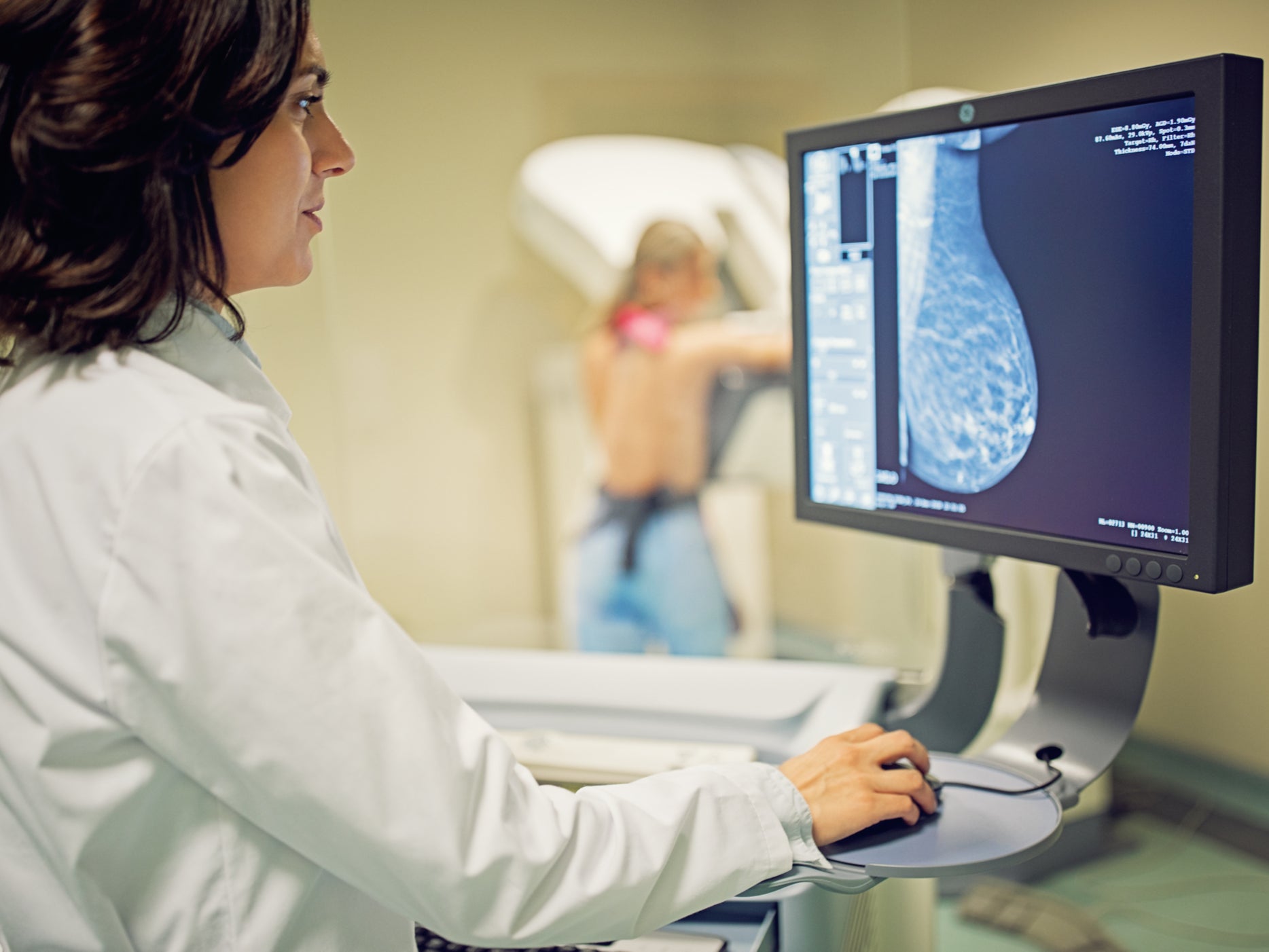Early screening for breast cancer could halve deaths, study suggests
Women are routinely invited for mammograms after the age of 50

Early screening for breast cancer in young women could halve the number of deaths from the disease, new research suggests.
Scientists at the University of Washington studied data from more than 64,000 women, half of whom have breast cancer and half who do not.
Their findings showed that carrying out MRI scans of women’s breasts from age 30 onwards could slash mortality rates by more than 50 per cent.
The scans should routinely be offered to those with gene mutations that increase the risk of the disease, such as BRCA1 and BRCA.
Other mutations which increase the risk of developing breast cancer are ATM, CHEK2 and PALB2.
“Screening guidelines have been difficult to develop for these women because there haven’t been clinical trials to inform when to start and how to screen,” lead author Dr Kathryn Lowry said.
“For women with pathogenic variants in these genes, our modeling analysis predicted a lifetime risk of developing breast cancer at 21 per cent to 40 per cent, depending on the variant.”
The findings are significant given that the likelihood of a breast tumour migrating or metastasising to other parts of the body rises by more than a third in those under the age of 35.
Under the NHS, women are invited for breast screenings, known as mammograms, every three years after the age of 50 until they turn 71.
But Lowry said the study’s findings show that breast screenings should take place annually and should start between the age of 30 to 35.
“We project starting annual MRI screening at age 30 to 35, with annual mammography starting at age 40, will reduce cancer mortality for these populations of women by more than 50 per cent,” she said.
A mammogram is an X-ray of the breasts which looks for cancers that are too small to feel.
An MRI, which uses magnetics fields and radio waves to create images of the inside of the body, may be helpful in detecting smaller tumours and those in women with dense breast tissue. Breast tissue tends to get less dense with age.
Lowry said the study had shown that MRIs of the breasts were more effective in younger women, as a mammography alone of dense breast tissue “increased false-positive screens”.
These are cases in which women are wrongly told they might have breast cancer, leading to anxiety and unnecessary biopsies.
Additionally, it pointed to the importance of screening for other mutations other than BRCA1 and BRCA2.
“People understand very well the value of testing for variants in BRCA1 and BRCA2, the most common breast cancer predisposition genes,” Dr Mark Robson, an author of the study and chief of the Breast Medicine Service at the Memorial Sloan Kettering Cancer Centre, said.
“These results show testing other genes, like ATM, CHEK2, and PALB2, can also lead to improved outcomes.”
Around 2.3 million people worldwide are diagnosed with breast cancer each year.
In the UK, around 11,500 people die from the disease annually.
Subscribe to Independent Premium to bookmark this article
Want to bookmark your favourite articles and stories to read or reference later? Start your Independent Premium subscription today.

Join our commenting forum
Join thought-provoking conversations, follow other Independent readers and see their replies
Comments